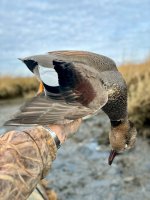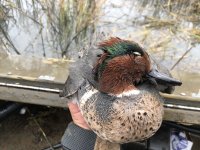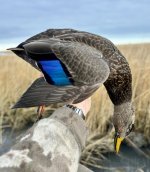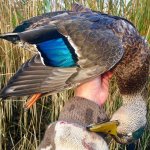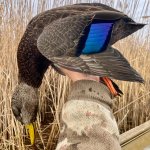Craig F
Well-known member
I've shot a fair amount of gadwall over the years, but this particular drake from the other day stood out a bit. It has a very distinct black ring on its neck. Some googling showed that it seems to be a semi-uncommon color variation. I can't seem to remember shooting one similar in the past but not sure if anyone else has encountered this. I did put it in the freezer.

